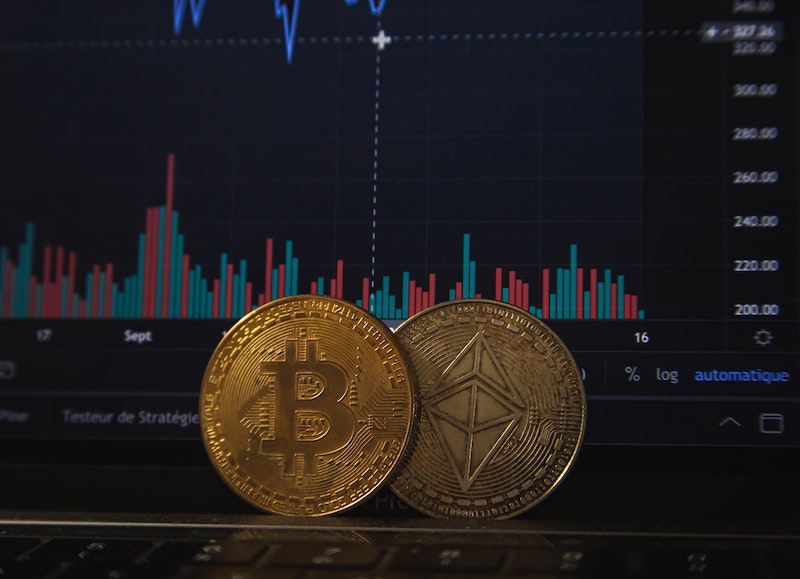DAS: What does it really mean to be a crypto broker?
 The prime brokerage world from a traditional asset class perspective is well established – with a wide range of bells and whistles, its USP is its holistic approach, covering everything from custody to capital introduction, helping its client base to source liquidity they could not find themselves. But in the digital asset space, what role can prime brokers actually play – and is it realistic to try to shoehorn the current model into this new decentralized world? Panelists at Blockworks’ Digital Assets Summit (DAS) this week discussed the concept of prime brokerage, and how it can be updated to address the new paradigm.
The prime brokerage world from a traditional asset class perspective is well established – with a wide range of bells and whistles, its USP is its holistic approach, covering everything from custody to capital introduction, helping its client base to source liquidity they could not find themselves. But in the digital asset space, what role can prime brokers actually play – and is it realistic to try to shoehorn the current model into this new decentralized world? Panelists at Blockworks’ Digital Assets Summit (DAS) this week discussed the concept of prime brokerage, and how it can be updated to address the new paradigm.
“Not everyone with a lending service can call themselves a prime broker,” warned George Zarya, founder, CEO and head of sales at crypto prime broker BEQUANT. But the problem is that, unlike traditional finance, prime brokers in the crypto space have not yet evolved to offer everything their clients need.
“In crypto, it seems that ‘prime’ and ‘broker’ are two different things. Brokerages are just people buying crypto from each other, says Maja Vujinovic, CEO of blockchain advisory and investment firm OGroup. “But Prime is a whole package of services. It depends on the seat you’re sitting in.”
So what is a crypto broker and does anyone fill that role yet?
“There are some firms out there doing some parts — the custody role, for example — but right now I don’t think we’ve reached the finished article yet,” said Edd Carlton, institutional digital asset trader at Flow Traders. “The use of the word ‘Prime’ is usually because it’s a one-stop shop. If you don’t do all the pieces, you don’t hit the mark.”
Fragmentation
“The two key variables we need to emphasize when discussing the difference between crypto and tradfi are fragmentation and pre-funding,” emphasized Omid Zadeh, Head of Business Development EMEA at Matrixport.
“The crypto market is so fragmented, there’s liquidity across hundreds of different venues and you have to pre-fund them, which is very different from the traditional space. Pre-funding and fragmentation of liquidity is where the real value of a crypto broker comes in right now – we can offer access to every exchange and top-level fees to every exchange, which is very important in this low-volume environment. We can also provide the key benefit of offering one margin to play with – cross-margin services can be key for businesses.”
However, the panel agreed that while there are currently many players in the market, we are likely to see significant consolidation going forward – the question is who is buying who.
Acquisition
“Building a crypto specialist company, such as cryptodepot, is not an easy feat – there’s a lot of coding and technical architecture involved. These pieces will inevitably be acquired. You can’t have an initial store without offering a complete package, and there are only two ways to it – you build or you buy The Goldman Sachs approach has been to buy it and we’re already starting to see more big tradefi names aligning with specialist firms, either through acquisitions, licensing deals etc. One of the roles of a prime -brokerage is to be a rock to stand firm in turbulent times, and in times like these, balance is important.”
However, Zarya disagreed. “Balance is important, but it’s not everything. Everything is optics. What happened to Credit Suisse? To Lehman Brothers?”
Interruption
The concern seems to be to avoid a simple copy and paste of what is done in the traditional financial world. “Early adopters got into crypto because they were passionate about decentralization,” Vujinovic stressed. “Now we’re just trying to cram it back into a centralized model again. But I think technology is going to evolve to a point where it disrupts that. Yes, the tools, the picks and shovels at the coal face, are being acquired by larger institutions. But the banks will end up just being software-as-a-service platforms. They will offload crypto custody, just like they do KYC. We’re at a place now where we have to change that, think outside the box and create a different system that works better — not just doing the same old thing, just because Goldman Sachs does it.”
However, Carlton pointed out that acquisitions could also work the other way – with large crypto firms buying smaller banks to bring in regulated capabilities.
Centralization
“We need to get capital into the crypto markets, and the way to do that is by creating a market infrastructure model that replicates the main model, with centralization of clearing and risk, but with the nuance of a hybrid model that uses DLT and smart contract. applications. It’s the way we’ll see the tide move,” he said. “Would a full belt and suspenders prime brokerage in the crypto market help right now? Yes. Would it increase investor confidence and make the market more efficient? Yes. I think prime brokerage has a key role to play in moving this forward.”
However, the biggest problem in the space remains the issue of pre-funding. Right now, most of the liquidity in the crypto space is on centralized exchanges, and these require upfront funding, which all panelists agreed was not efficient.
Additionally: “The networking side of things doesn’t exist yet in crypto, and that needs to change,” Zadeh pointed out. “For example, let’s say you have two exchanges: Binance and FTX. If you are Hedge Fund A trading $100 million on Binance long, and $100 million on FTX short, if you had a prime broker in between, he would require minimal margin from you. While it is currently in the crypto space, it is different because of pre-funding. You must have 200 million dollars on both exchanges. Of course you will have a prime broker in between leveraging you, but that funding will be on these exchanges.
“The only way I can see potential change in the future is regulation as the first step; then after regulation the real money customers will come in, the banks will then come in, and then a big player – a Citibank or a JP Morgan, with a huge balance sheet that dwarfs the exchanges, that can PB, and net over all the exchanges, and then can all the institutional counterparties (the big real money clients who have trillions under management) really start trading crypto full pelt.”
But will institutional traders ever come in full steam?
“We’ve certainly seen a shift with institutional traders coming into the space, but we’re still riding on retail lines,” Zarya said.
Development
The move, for institutional involvement, is likely to be accompanied by a shift from exchange to OTC trading – similar to the trajectory of foreign exchange markets a few years back. “Electronification, from hi-touch voice-driven trading to an API, FIX-driven market – we see the same trends apply,” agreed Carlton.
“Retail liquidity is suitable for exchanges, but institutional liquidity is much more satisfied in the OTC markets. When the barriers are removed to allow real institutions to enter the market, I’m not saying the exchanges will go out of business, but they will probably continue to serve retail clients while institutional flow will be more to the OTC area.”


